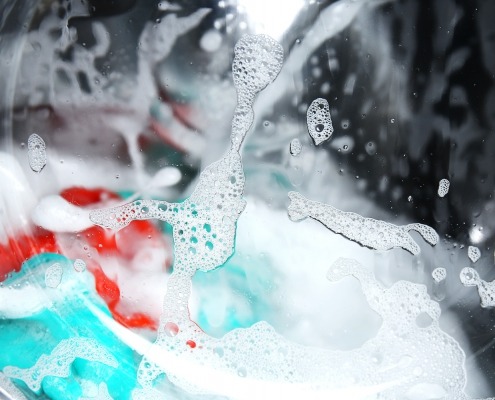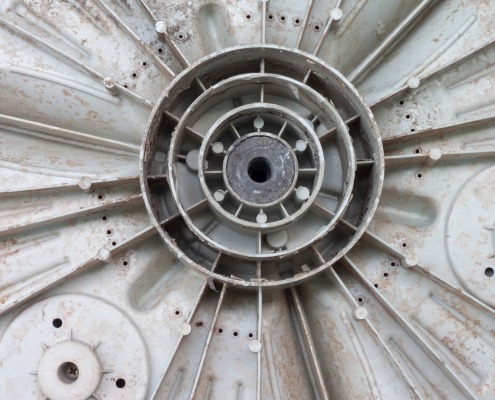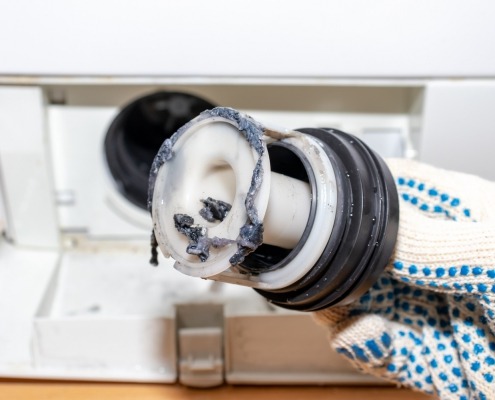How to replace the Whirlpool washer lid lock assembly W11307244
Steven E / Friday May 16, 2025
Struggling with a washing machine that just won’t start? A faulty lid lock assembly could be the culprit, frustrating homeowners with Whirlpool, KitchenAid, and Maytag models alike. Get ready to tackle this common issue head-on—our step-by-step guide, complete with a how-to video, will have your washer back in action in no time!
Looking for the right part? Enter your appliance model number below to find the exact match and get your appliance running like new again!
Have issues with your washing machine and suspect the lid lock assembly might be to blame? Lid lock assemblies are crucial components in many popular washer brands like Whirlpool, KitchenAid, and Maytag. When your washing machine’s lid lock assembly stops functioning properly, it can prevent the washer from operating correctly.
The information in this article may not apply to your specific appliance model. We recommend consulting your manufacturer’s documentation or contact us with any questions.
Safety first: Power and water precautions
Before tackling any appliance repair project, it’s critical to take some safety precautions. When working on your washing machine, the first thing you’ll want to do is unplug the washer from its power source or turn off the circuit breaker that controls the electrical supply to the washer. This ensures there’s no chance of electric shock while you work on the unit.
You’ll also want to shut off the water supply to the washing machine. There are typically valve knobs or shut-off valves behind or near the washer that control water flow. Turning those valves clockwise will stop any water from entering the washer during your repair work.
Other safety precautions
- Wear insulated gloves to protect your hands from sharp edges, pinching hazards, or debris.
- Take your time and work at a steady pace to avoid accidents or injuries.
- Make sure your workspace is well-lit so you can clearly see and access the parts you’re working on.
- Keep your area organized and free of clutter, and ensure children and pets are kept away from the workspace.
- Check your appliance’s user manual for specific instructions or safety guidelines related to your repair.
- Handle parts gently to prevent damaging the appliance or injuring yourself by using too much force.
- Wear safety glasses if you’re dealing with chemicals, dust, or large debris to protect your eyes.
- If the appliance was recently used, give it time to cool down before working on any heated components.
- Take photos or notes of wiring connections before disconnecting anything. This makes reassembly much easier.
- Avoid touching exposed wires or terminals. If you need to handle wires, use non-conductive tools or wear insulated gloves to reduce the risk of electrical shock.
Necessary materials
To complete this repair smoothly, you’ll need to have the right tools and a new lid lock assembly ready to go. Here’s a list of everything you’ll need:
- Quarter-inch nut driver
- Improvised rope
- Flat blade screwdriver
- New lid lock assembly – (Part #W11307244)
Once you have all of those items ready, you can move on to the repair steps.
Step-by-step replacement instructions
Replacing the lid lock assembly involves removing the control console first to access the part. Then you’ll detach the old lid lock and install the new replacement part.
Remove the rear access panel
- Start by using your quarter-inch nut driver to remove the single screw holding on the small rear access cover plate.
- Take off that cover plate and set it aside.
- With the cover off, you’ll see three long screws that hold the rear access panel in place.
- Carefully remove all three screws with your nut driver.
- Once those screws are out, you can pull off the entire rear access panel. Be gentle, as there will still be wires attached inside.
- Set the panel off to the side.
Unplug the lid lock wire harness
Inside the washer’s rear compartment, look for the lid lock wire harness. It routes from the lid lock up through the cabinet and plugs into a connector on the control board.
- Press down on the locking tab on that connector and gently pull the harness plug free from the control board.
Remove the plastic harness retainers
There are likely some plastic retainers that keep the lid lock harness held in place. You’ll need to remove those next.
- First, locate the plastic retainer clip and squeeze the sides to release it.
- Slide it off the harness.
- Then find the harness retainer that has two small prongs on it.
- Squeeze the prongs and push down the retainer to loosen the harness.
Detach the top panel
- At the back of the washer top, find two quarter-inch screws near those hinge tab slots.
- Remove both screws with your nut driver.
- Now move to the front of the washer.
- Carefully lift up on the top panel while holding the lid closed.
- As you lift the top, guide the hinge tabs into the slots so the top can prop open safely.
- Use your improvised rope to hook onto the cabinet and top panel to hold it open.
Remove the lid lock assembly
With the top open, you can see the faulty lid lock assembly mounted inside.
- Slide a flat-blade screwdriver into the side and gently pry the lid lock mechanism toward the right. It should pop free.
- Remove the lid lock assembly from the washer cabinet.
- Detach the wire harness by pressing the release tabs on the plastic retainer clips.
Install the new lid lock assembly
Your new replacement lid lock assembly will come with the wire harness already attached.
- Start by inserting the white plastic portion into the lid lock cutout hole.
- Slide it all the way right, then press in and slide it left until it clicks into place.
- Route the new wire harness loosely through the opening and cabinet. You’ll secure it later.
Reattach the wire harness and top panel
- Press the wire harness into the plastic retainer clips to secure it.
- Then push the harness retainer back into place so it locks.
- Remove your improvised lid prop rope.
- Slowly lower the washer top panel back down and latch it back onto the hinge hooks securely.
- Move back to the rear of the washer.
- Insert the wire harness connector into the control board until it clicks and locks in place.
Reinstall the rear access panel
With the new lid lock installed and wired up, you can remount the rear access panel on the back of the washer.
- Carefully align the panel and slide it on so the tabs fit around the valve and other rear components.
- Insert and tighten down the three long screws with your nut driver to secure the panel again.
- Finally, reattach the small access plate and single screw.
Finish up and test
You’re in the home stretch now!
- First, turn the water supply back on so water can flow to the washer again.
- Plug the washer back into its power source or turn on the appropriate circuit breaker.
- To test, run a cycle and make sure the new lid lock assembly allows the washer to fill, run, drain, and spin properly.
- Watch carefully for any leaks just in case a hose gets bumped or kinked during your work.
And that’s it – you’ve successfully replaced your washer’s lid lock assembly. No more issues with the washer not starting due to a faulty lid lock. Nice work!
More information
Thanks for reading! If you have any other appliance repair needs or projects, you can find more resources including our DIY blog at AppliancePartsPros.com. There, you can enter your model number to order the exact parts you need. Most orders arrive in two business days.
You can also reach our award-winning customer service team at 1-877-477-7278, chat with a pro on our website and watch thousands of free video tutorials on our YouTube channel.
With nearly a decade of experience in providing top-notch customer service regarding appliance parts and repair, Steven enjoys sharing practical advice, troubleshooting tips, and interesting information to help readers stay informed.





